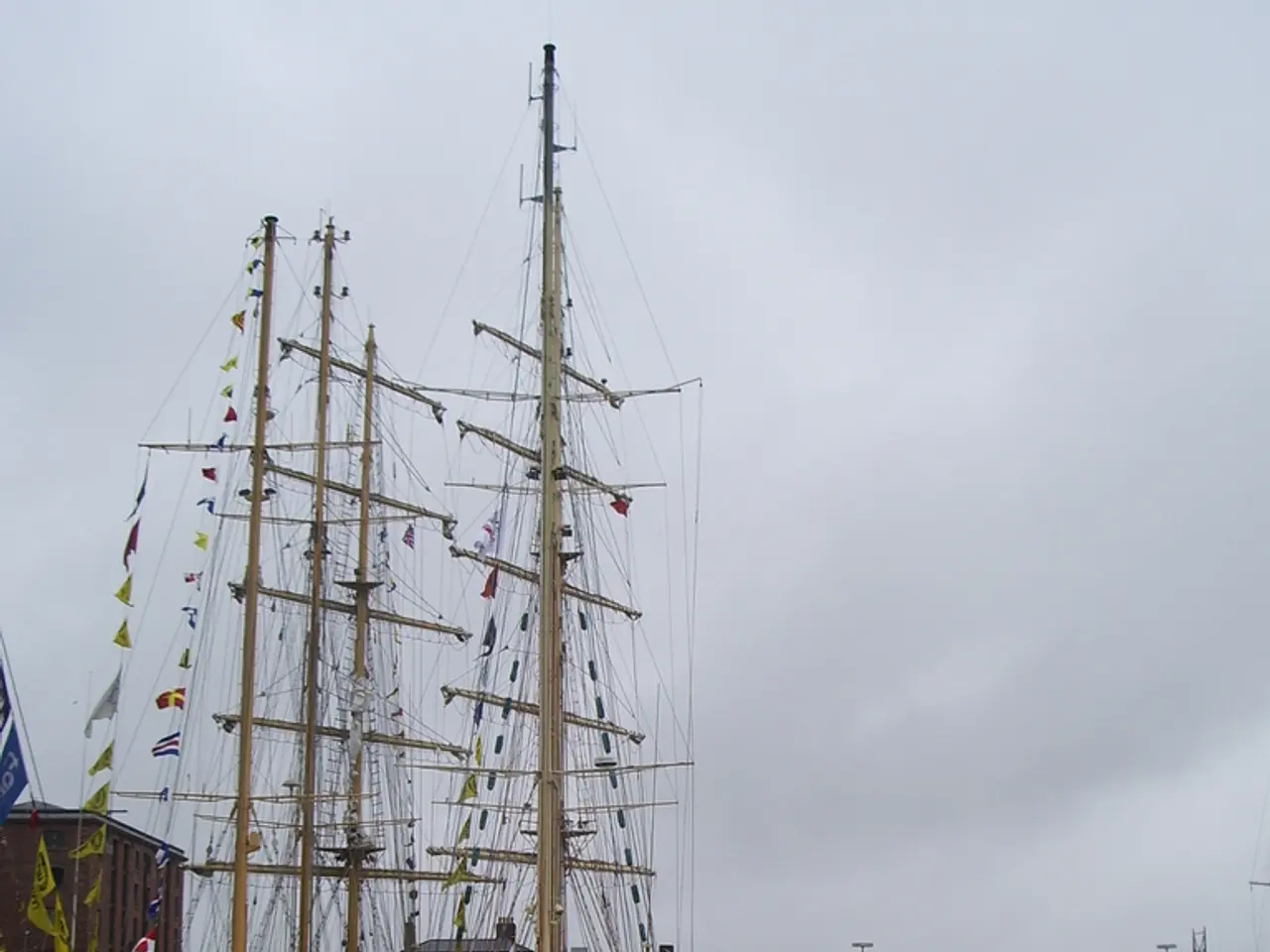Satellite-measured seabed data (SDB) and secure navigation safety.
In the realm of hydrographic surveying, a significant shift is underway as satellite bathymetry techniques are increasingly being employed. This innovative approach offers a broad spatial coverage and valuable bathymetric information, particularly in shallow waters and remote areas.
The most demanding category of hydrographic surveys, known as Special Order surveys, are crucial for coastal areas where under-keel clearance is vital for the safety of navigation. These surveys are traditionally undertaken using conventional hydrographic methods, but the advent of satellite bathymetry is opening up new possibilities.
The technique of using satellite imagery data to generate bathymetric depths was first demonstrated in a study conducted by the University of Michigan in the 1970s. Since then, the technology has grown and matured, with SDB (Satellite Derived Bathymetry) now contributing to safety of navigation issues.
The global electronic cartography market is forecasted to reach $21,267.60 million, growing with a compound annual growth rate (CAGR) of 1.46% from 2014 to 2020. This market growth drives an increased requirement for suitable hydrographic data and related nautical information, fuelling the interest in satellite bathymetry.
However, it's important to note that while satellite bathymetry offers advantages such as cost-effectiveness, fast data acquisition, high resolution, and the ability to gather data from remote or inaccessible areas, it is generally less accurate and reliable than conventional hydrographic surveys for safety of navigation purposes.
The horizontal accuracy of SDB is a function of the spatial resolution of the satellite sensor used, with the uncertainty contained in bathymetric data usually of the order of 1 pixel size. The critical issue, however, is the achieved vertical accuracy, which is a function of an offset parameter equal to 0.5m and a depth-dependent factor of 10%-20%.
For critical applications like safe navigation, conventional hydrographic surveys remain the standard due to their higher accuracy, reliability, and thorough seafloor coverage. In areas with reduced depths of 5-40m, the maximum allowable depth uncertainty (TVU) should be between 0.253m - 0.391m for Special Order surveys, underscoring the importance of precision in these situations.
The International Hydrographic Organization's (IHO) S-44 Standard suggests that the minimum standards for conducting conventional hydrographic surveys are classified in four categories, focusing on their interest to the navigation. The IHO is encouraged to continue to develop policy for the technical aspects and quality standards for adopting SDB data in navigational products.
Further validation and research is needed to ensure that the SDB capability satisfies the accuracies specified in S-44, particularly in regards to its vertical accuracy. Advances in satellite technology, new techniques, sophisticated algorithms, and software have improved the potential for Hydrographic Offices (HOs) and scientists to improve the knowledge about the seafloor morphology and marine habitat conservation.
In conclusion, while satellite bathymetry offers valuable contributions to hydrographic surveying, particularly in terms of cost-effectiveness and broad-scale mapping, conventional hydrographic surveys remain the gold standard for navigation safety due to their higher accuracy, reliability, and thorough seafloor coverage. Continued advancements and integration with in situ data may improve the future utility of satellite bathymetry, but for now, traditional surveys remain the priority for navigation safety.
- The safety of navigation, a critical concern in hydrographic surveying, particularly in coastal areas with under-keel clearance issues, relies heavily on conventional hydrographic surveys.
- The environmental-science field, with climate-change being a major focus, is increasingly using data-and-cloud-computing technology to analyze and interpret hydrographic survey data from marine science, including satellite bathymetry.
- Marine science, with the aid of nautical charting and hydrographic survey, is investigating how environmental changes may impact marine habitats, raising questions about the integration of satellite bathymetry into navigational products.
- The global marine science community is working towards improving the vertical accuracy of satellite-derived bathymetry to meet the International Hydrographic Organization's (IHO) S-44 Standard, which emphasizes the importance of precise hydrographic data for maintaining safety of navigation.




